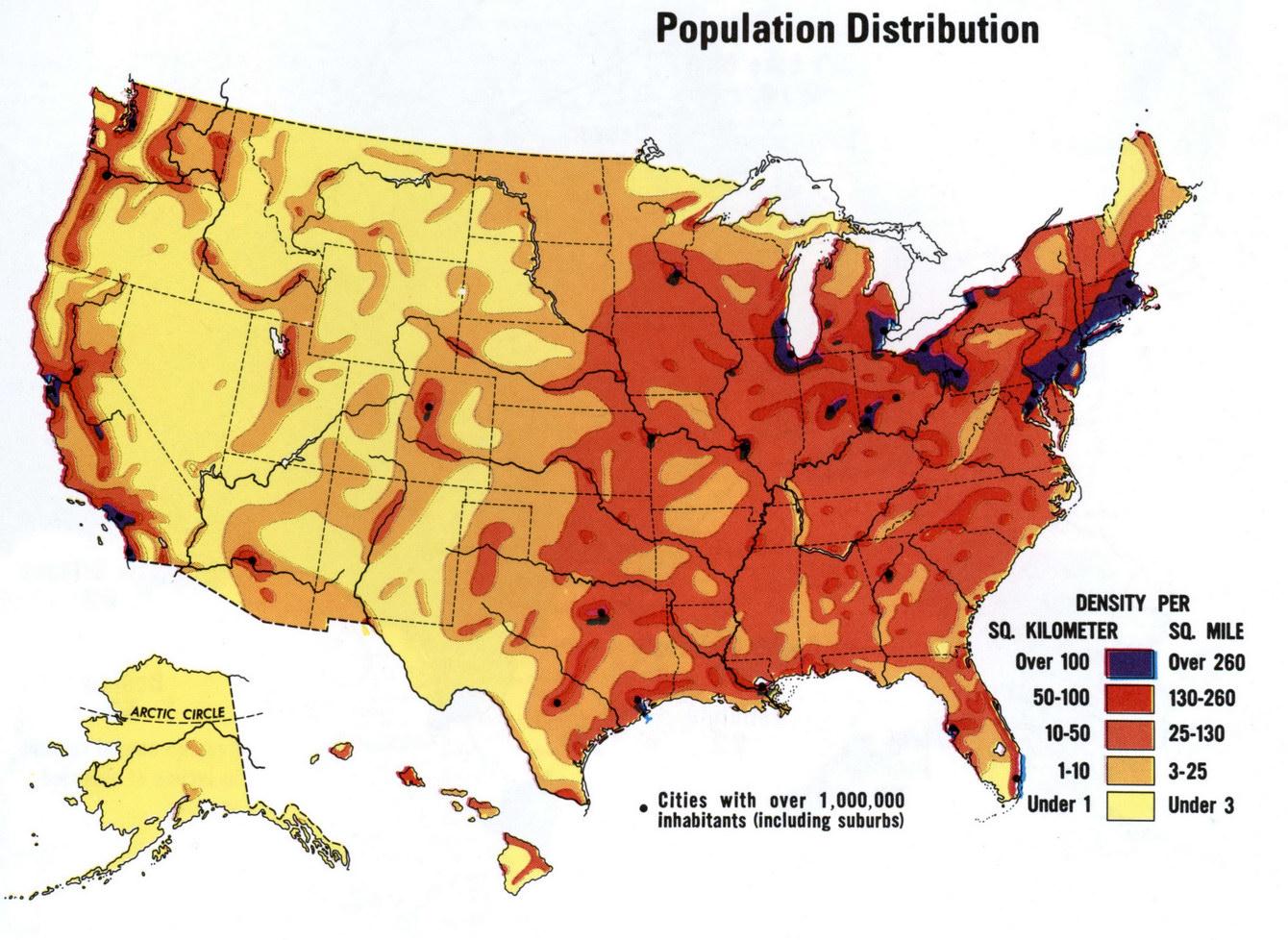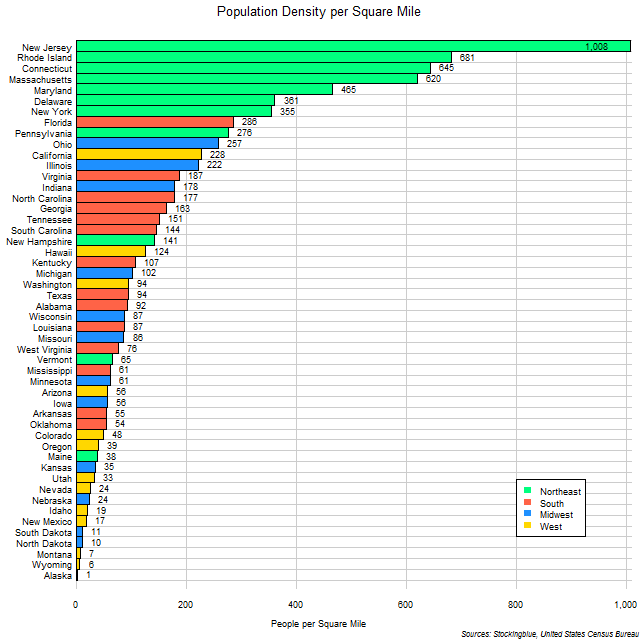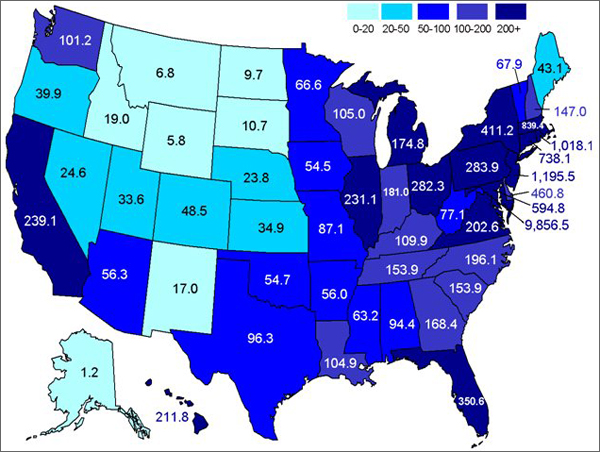This is a list of the 50 states, the 5 territories, and the District of Columbia of the United States of America by population density, population size, and land area. It also includes a sortable table of density by states, territories, divisions, and regions by population rank and land area, and a sortable table for density by states, divisions, regions, and territories in square miles and square kilometers.
The population density of the United States is lower than that of many other countries because of the United States' large land area. There are large, sparsely populated areas in parts of the US, like the east-to-west stretch extending from the outskirts of Seattle all the way to Minneapolis, or the north-to-south portion from northern Montana to southern New Mexico, excluding Denver and Albuquerque. For comparison, the population density of the U.S. is 1/15 that of South Korea and 1/12 that of India and the Netherlands. On the other hand, it is over 8 times higher than that of Canada and over 9 times higher than that of Australia.
States and territories by population density
Population density is defined as the population divided by land area. Data are from the US Census unless otherwise specified. Population data are for the year 2023 and area data are for the year 2010. Some population estimates for territories are from the United Nations Commission on Population and Development.
Gallery
See also
- List of U.S. states and territories by area
- Demographics of the United States
- List of U.S. states by population
- List of United States cities by population density
- List of U.S. states by historical population
- List of U.S. states by African-American population
- List of U.S. states by fertility rate
References
External links




